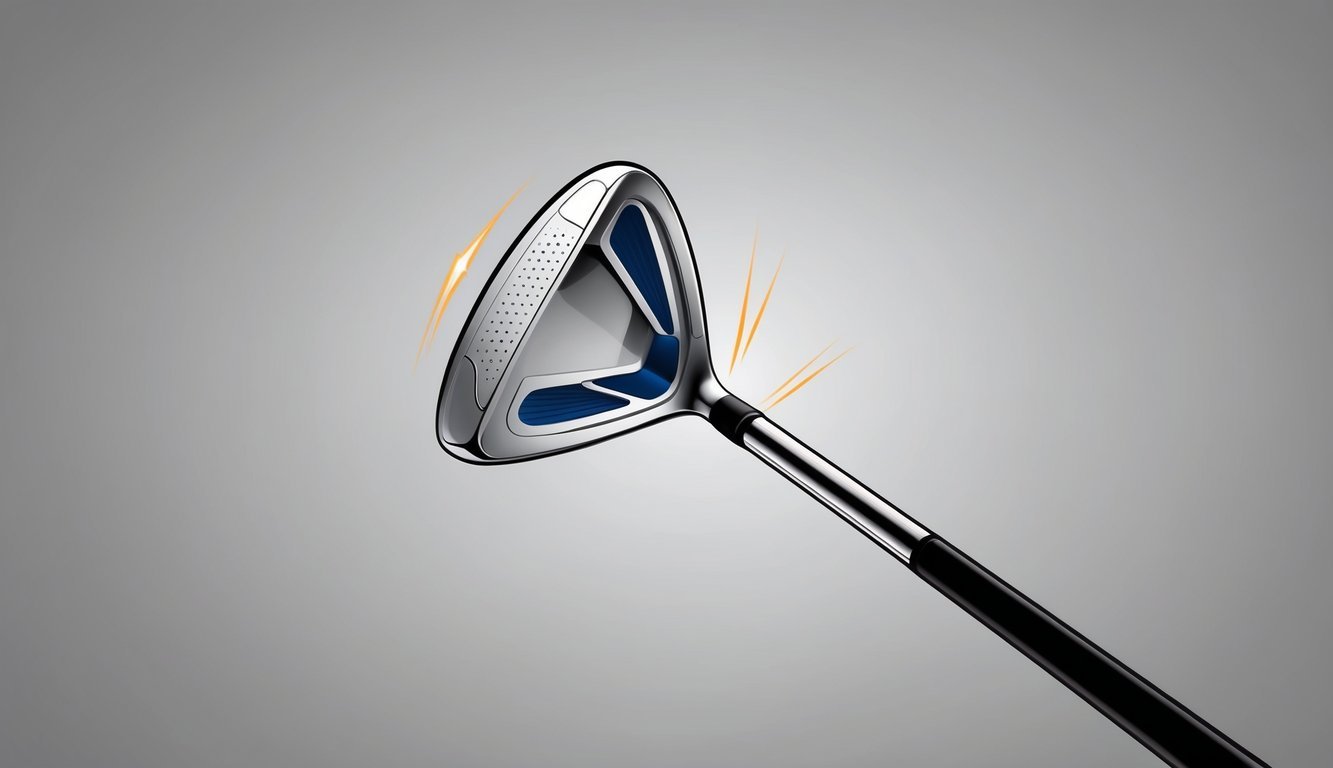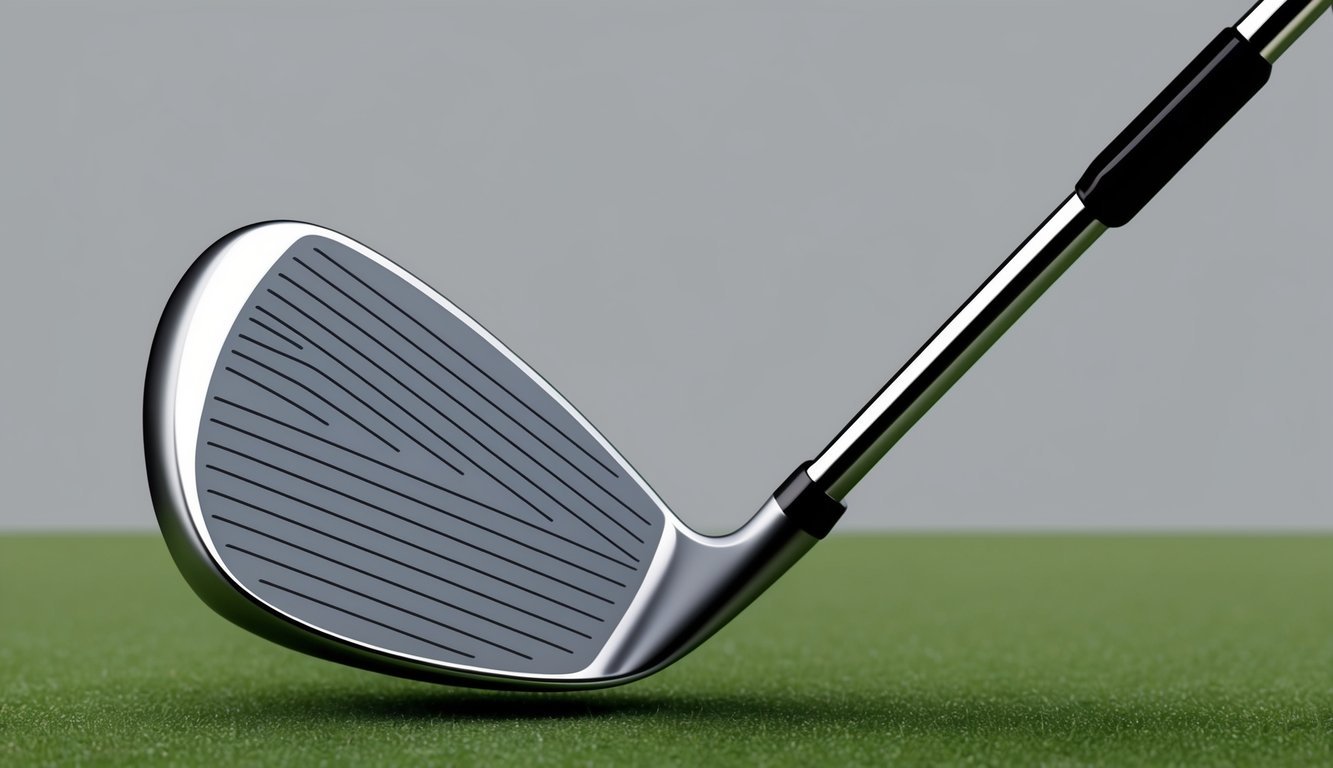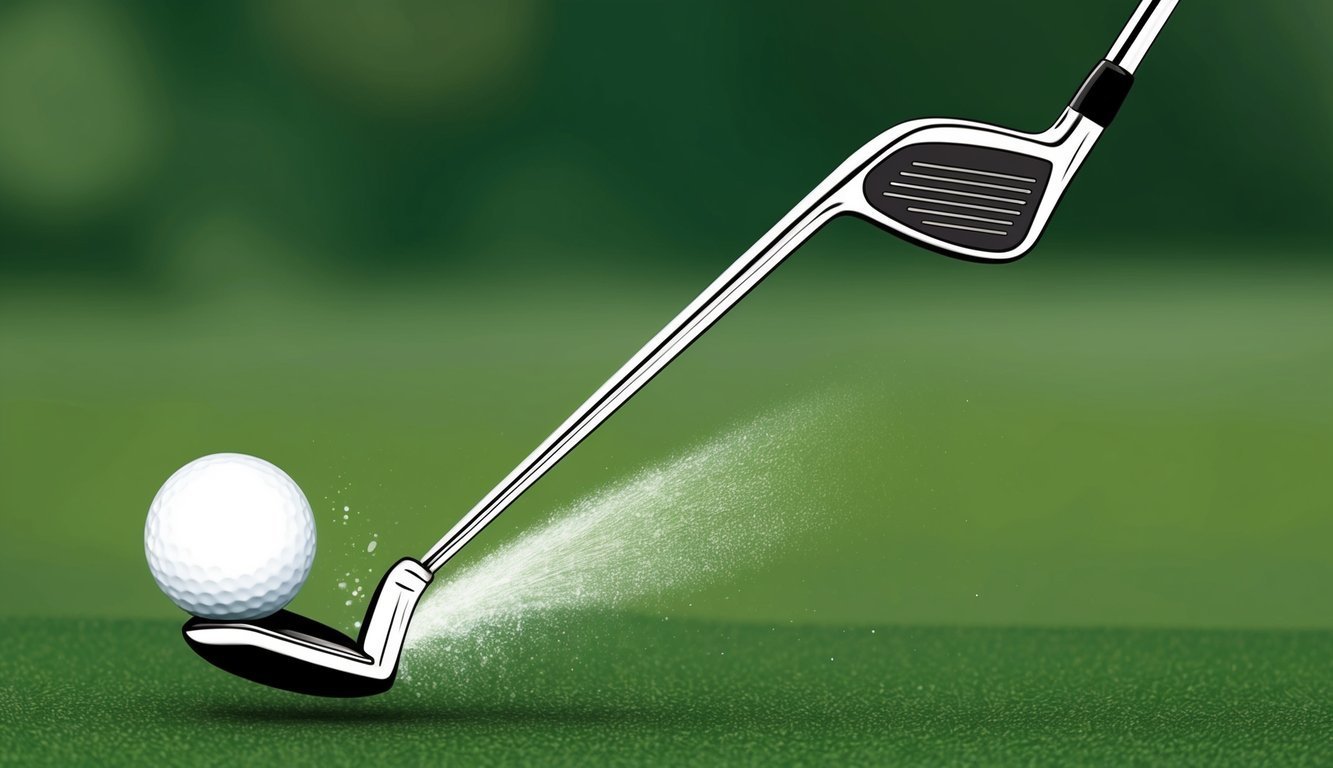Golf shaft flex is a crucial factor in achieving optimal performance on the course.
The flex of your golf shaft impacts the accuracy and distance of your shots.
Whether you’re a beginner or an experienced golfer, selecting the right shaft flex tailored to your swing speed can make all the difference in your game.

Understanding the nuances of golf shaft flex involves knowing how it affects your swing and overall technique.
For instance, a regular flex may suit casual players, offering a balance between control and flexibility, while a stiff flex is designed for those with a faster swing.
Choosing the wrong flex can lead to inconsistent shots and hinder your improvement.
Exploring the materials and construction of shafts can also influence your choice.
Many modern shafts come in graphite or steel, each offering unique advantages in terms of weight and flexibility.
Armed with the right information, you can find a shaft that matches your style, improving your results and enjoyment on the course.
Key Takeaways
- Shaft flex affects shot accuracy and distance.
- Match flex to your unique swing speed for better control.
- Material choice influences shaft performance.
Understanding Golf Shaft Flex
Golf shaft flex plays a crucial role in your game by impacting the drive’s trajectory and accuracy.
Choosing the right flex ensures better performance and control over your shots.
Each flex type suits different swing speeds and player capabilities.
Importance of Shaft Flex in Golf
Shaft flex significantly influences your shot outcomes.
The amount of bend in the shaft during a swing can determine whether the ball travels with the intended trajectory and distance.
When your shaft flex aligns with your swing speed, you’ll likely notice improvements in both control and precision.
A well-matched shaft flex provides a comfortable feel, allowing you to focus on technique rather than adjusting for mismatched equipment.
This balance between flexibility and stiffness enhances your overall performance on the course.
Types of Golf Shaft Flexes
Golf shafts come in several flex categories, each suited to specific swing speeds and player abilities.
The main types include L (Ladies), A (Senior), R (Regular), S (Stiff), and X (Extra Stiff).
For instance, Regular flex offers a balance suitable for swing speeds between 85 and 95 mph.
If your swing is faster, consider stiffer options like Stiff or X-Stiff.
Each flex type caters to different needs, enhancing your control and accuracy.
Factors Affecting Flex Choice
Your swing speed is a primary factor when choosing the right shaft flex.
Higher speeds generally require stiffer shafts, while lower speeds benefit from more flexible options.
The firmness you feel during a swing should match your playing style and capabilities.
Personal preference also plays a role.
Some golfers prefer a softer feel, while others seek the solidity of stiffer flexes.
Additionally, the particular golf clubs you use can also influence the appropriate flex choice.
Tailoring your equipment to suit your needs ensures optimal performance and enjoyment on the course.
Matching Shaft Flex to Swing Speed
Choosing the correct golf shaft flex is crucial for optimizing your performance on the course.
Your swing speed largely determines the appropriate flex, affecting ball flight, control, and distance.
Knowing your swing speed allows you to make an informed decision about which shaft flex to use.
Assessing Your Swing Speed
Before selecting a shaft flex, it’s important to know your swing speed.
One way to measure this is using a launch monitor or visiting a golf store that offers this service.
You can also estimate based on your driving distance; golfers hitting around 230 yards often have clubhead speeds of about 95 mph.
Another factor to consider is how consistently you swing.
Consistency helps in determining if the speed measurement truly reflects your typical performance.
Knowing these details gives you a solid foundation for selecting the right flex.
Choosing Flex for Your Speed
Once you have your swing speed, match it with the appropriate flex.
If your swing speed is between 85-95 mph, a regular flex may work well for you.
For speeds above 105 mph, consider using extra stiff shafts, which provide more control for faster swings.
Slower swing speeds, often under 85 mph, may benefit from senior or ladies flex shafts.
These offer more flexibility, helping increase distance and improve control for those with slower swings.
Selecting the correct flex can greatly impact your game, helping you hit straighter and longer shots.
Impact of Incorrect Flex
Using the wrong shaft flex can lead to various issues.
A too-stiff shaft might reduce your distance and accuracy, making it hard to achieve the desired ball flight.
It can increase spin rate and decrease control, particularly in windy conditions.
Conversely, a shaft that’s too flexible might cause you to struggle with direction and consistency.
This can lead to unwanted side spins, sending shots off target.
Therefore, matching your shaft flex with your swing speed is essential for improving performance and enjoying your time on the course.
Material and Construction of Shafts

When it comes to golf shafts, the choice between graphite and steel greatly impacts performance.
These materials differ in flexibility, weight, and torque, each influencing your swing and ball flight in unique ways.
Graphite vs Steel Shafts
Graphite and steel are two primary materials used in golf shafts.
Graphite shafts are known for their lighter weight, which can help increase swing speed.
They are often favored by players seeking extra distance and are more forgiving on the joints.
In contrast, steel shafts provide more control and precision, offering a stiffer feel that many players associate with greater consistency.
Graphite shafts generally have a softer feel and tend to absorb shock better, which can be particularly beneficial for players with slower swing speeds or joint problems.
Steel shafts, by contrast, are often preferred by players who prioritize control and accuracy over distance.
Understanding Shaft Weight and Torque
Shaft weight affects your swing in notable ways.
Lighter shafts, often made from graphite, can help you achieve a higher swing speed, which may lead to greater distance.
On the other hand, heavier steel shafts offer more control and are favored by players looking for consistency.
Torque refers to the shaft’s resistance to twisting during a swing.
Higher torque can result in a softer feel, while lower torque provides a stiffer feel, impacting ball trajectory.
Understanding these factors can help you select the right shaft that complements your playing style and swing characteristics.
Selecting the Right Shaft for Your Game

Choosing the right shaft is crucial for optimizing your performance on the golf course.
The ideal shaft will complement your unique swing and playing style, enhancing your consistency and ball flight.
The Role of Personal Preference
When selecting a shaft, personal preference plays a significant role.
Your comfort with a particular flex can influence your confidence and performance.
Some golfers prefer a shaft that offers more flexibility, allowing for a higher trajectory and softer feel.
Consider how different shafts feel during practice swings or at the driving range.
Your comfort level can greatly affect your game, so prioritize what feels best for you.
A confident swing often translates to better shots.
Many golfers test various golf shafts to find the right balance of control and flexibility.
It’s important to spend time exploring different options to ensure you’re selecting equipment that suits your personal taste and style of play.
Club Fitting for Optimal Performance
Club fitting is an integral part of finding the right shaft.
A professional club fitter can analyze your swing speed, launch angle, and ball trajectory.
This analysis helps you select a shaft that enhances performance.
During a fitting session, technology is often used to gather data on your swing.
This data aids in understanding how different shafts influence your game.
Shaft options are tested to determine which provides the best results, considering factors like control and consistency.
Being fitted for the right shaft can enhance your confidence on the course.
It ensures your clubs match your swing and playing style, allowing you to focus on improving your skills.
Engage with a professional to make the most informed decision for your game.
Advanced Considerations and Tips

When choosing a golf shaft, you need to consider how it affects your ball flight and adjust your playing style accordingly.
This includes understanding how flexibility and stiffness impact spin, launch angle, and your overall game performance.
Effects of Shaft Flex on Ball Flight
The flex of your golf shaft plays a crucial role in determining ball flight characteristics.
A softer flex can increase the launch angle, helping the ball achieve greater distance due to a higher trajectory.
This may be beneficial for some amateur or senior golfers who need additional lift.
However, if a shaft is too flexible, it might lead to excessive spin, resulting in hooks or slices.
Using stiffer shafts can enhance accuracy by reducing unwanted spin, making them more suitable for players with faster swing speeds.
Professionals or those with a more powerful swing often prefer these to achieve better control over ball flight.
It’s crucial to find the right balance to match your tempo and timing.
Using tools like a launch monitor can help you analyze and adjust your setup for maximal performance.
Adjusting to a New Shaft Flex
Adjusting to a new shaft flex requires you to be mindful of changes in how the club behaves through the swing.
A more flexible shaft requires you to focus on your timing.
This is because it bends more significantly, affecting the point of impact.
This is crucial for achieving consistent accuracy and distance.
If transitioning to a stiffer shaft, you may notice a difference in how much effort is required to achieve the desired launch.
This adjustment period involves recognizing whether the club feels too stiff for your comfort and could potentially impact your swing’s fluidity.
It’s beneficial to experiment with different shaft types, like those from Project X, to determine your personal preferences and find the best fit for your game.

